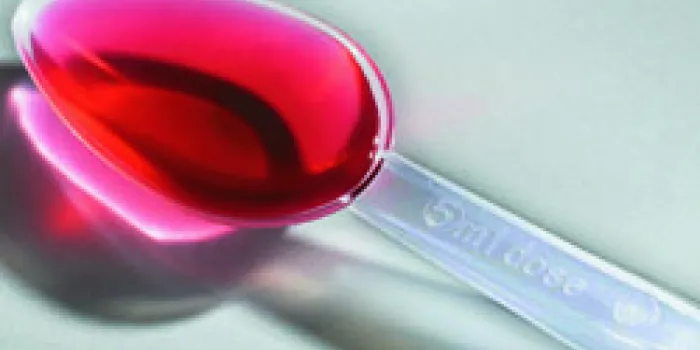The US Food and Drug Administration (FDA) and Consumer Healthcare Products Association (CHPA) took actions in May 2011 that will affect consumers in the bleeding disorders community: revamping the dosing devices packaged with any over-the-counter (OTC) liquid medications for adults and children, and restricting infant acetaminophen to one strength.
Dosage Delivery Devices
Dosage delivery devices for liquid medications come in a variety of forms, from cups and droppers to spoons and syringes. They also come in a variety of measurements, from teaspoons and ounces to milliliters (mL) and cubic centimeters (ccs). Confusing markings on the devices have resulted in patients either taking too much or too little. In one study, 70% of parents poured more than 6 mL of liquid into a cup intended for 5 mL dosage.
Too much of even an OTC product can be harmful. For instance, acetaminophen, a pain reliever and a fever reducer commonly approved for patients with bleeding disorders, can cause acute liver failure if taken in larger-than-recommended doses. (See “The Rx Factor,” HemAware Summer 2011.) Children are particularly susceptible to overdoses of many OTC products because their bodies can’t break down the medications as rapidly as adults can.
“Accidental overdose in young children is an increasingly common but preventable public health problem,” said Karen Weiss, MD, of the FDA’s Safe Use Initiative at its Center for Drug Evaluation and Research, in a press release.
Taking the Doubt Out of the Dosing
To prevent accidental overdose of OTC medications, the FDA has issued guidance documents, which recommend but do not require manufacturers to use consistent language and standard abbreviations in the written dosing instructions and on the measuring devices for all OTC liquid medicines for adults and children. For instance, if the dose is given in teaspoons, the device should have clearly marked teaspoon levels, abbreviated “tsp.”
The FDA is also asking manufacturers to avoid using what are called trailing zeros after a decimal point. “If you have harried parents with a child who is burning up with fever, they might read 4.0 as 40. You’re looking at a 10-fold error,” says John Reed, PharmD, founder of Cyril Home Care Pharmacy in Cyril, Oklahoma. “The flip side of that is if it’s supposed to be .4, it should say 0.4.” That way parents avoid another 10-fold dosing error.
Dosing errors also result when parents misread fraction markings on dosing devices. To alleviate that problem, the FDA is suggesting the use of various font sizes. “We need to use larger font sizes for whole numbers and smaller font sizes for fractions, so parents can see that it clearly reads ½, not 1 or 2,” Reed says.
Further, the FDA is urging manufacturers to get rid of extraneous markings that could be confusing and to make sure markings can be clearly seen once the liquid is added. In addition, the label will warn consumers to use only the calibrated dosing device packaged with the medication. This is to discourage people from using kitchen spoons, which vary in the amount of liquid they hold.
One way to ensure that you’re giving a child the proper dose is to get it in writing. “Ask your pharmacist to take a black marker and draw a line on the syringe or dosing cup, showing what the exact dose is,” Reed says. “That creates a lot of comfort in your mind and takes all the doubt out of the dosing.”
Infant Acetaminophen
For more than 50 years, manufacturers have sold OTC acetaminophen in liquid form as a pain reliever and fever reducer for infants. However, having three different strengths on the market has resulted in dosing errors. To prevent accidental overdose, the CHPA, the chief trade group for OTC drug manufacturers and distributors, called on the industry in May 2011 to market a single strength for infants.
“CHPA member companies are voluntarily making this conversion to one concentration to help make it easier for parents and caregivers to appropriately use single-ingredient liquid acetaminophen,” said Scott Melville, CHPA president and CEO, in a press release. The two concentrated forms of acetaminophen for infants—80 mg/0.8 mL and 80 mg/1 mL—will be withdrawn. In the future, only the 160 mg/5 mL strength, the current children’s strength, will be available. Further, the manufacturers will package infant acetaminophen with syringes containing dose restrictors.
Consumers should consult their doctor and/or hemophilia treatment center before taking any OTC medications and for the proper dosing amount for children younger than 2 years old. For older children younger than 12 years old, the products will continue to be packaged with a calibrated dosing cup. Their proper dosage will continue to be given by age and weight.

